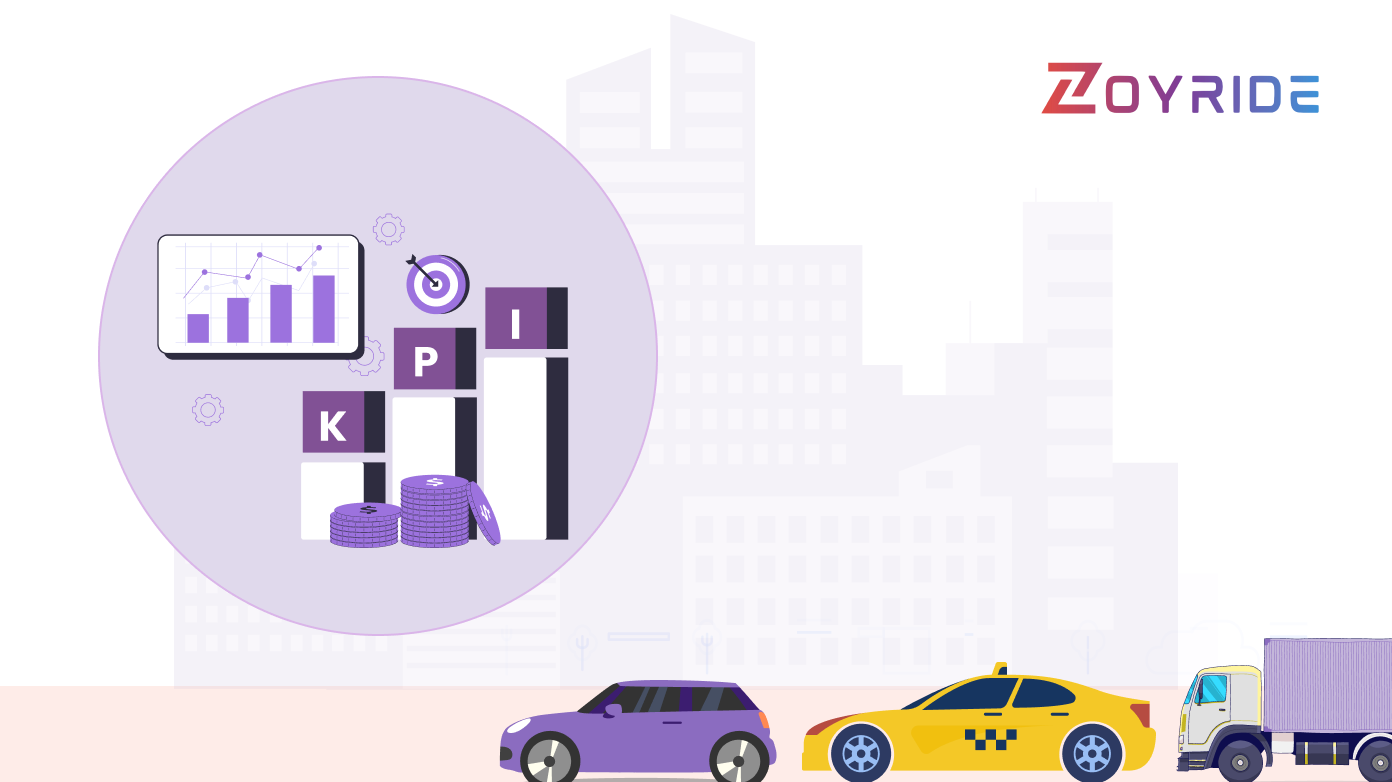
Fleet management isn’t just about keeping vehicles on the road—it’s about running a lean, efficient, and data-driven operation. With costs rising, customer expectations evolving, and pressure on delivery timelines increasing, it's more important than ever to measure what matters. That’s where KPIs, or Key Performance Indicators, come in.
Below, we’ll explore 7 essential KPIs that every transport and fleet operator should monitor to stay competitive and profitable.
1. Cost Per Mile/Kilometer
This KPI tracks how much your fleet spends per unit distance traveled. It combines fuel, maintenance, insurance, driver pay, and more.
Why It Matters: A high cost-per-mile can signal inefficiencies—maybe routes aren't optimized, vehicles are consuming too much fuel, or repairs are frequent.
How to Use It: Regularly track and compare it across different vehicles or routes. Use the data to re-route trips or identify underperforming vehicles.
Many operators rely on connected fleet tools to collect and analyze this data. With dashboards offering route-level insights and vehicle summaries, it's easier to act—not guess.
2. Vehicle Utilization Rate
Utilization rate refers to how often your vehicles are being used compared to their availability.
Why It Matters: Idle vehicles are wasted resources. If 30% of your fleet sits unused, you’re tying up capital without return.
How to Use It: Monitor the utilization percentage per week or month. Adjust scheduling or rotate the fleet to improve usage.
Real-time vehicle logs and usage analytics help businesses identify underused assets—some even opt to downsize or redeploy based on this insight.
3. Fuel Efficiency (MPG or KPL)
Fuel is one of the biggest recurring costs in fleet operations. Measuring how efficiently each vehicle uses fuel is critical.
Why It Matters: Poor fuel efficiency could be caused by aggressive driving, poor maintenance, or faulty engines.
How to Use It: Set fuel efficiency benchmarks for each vehicle type. Monitor and flag underperforming units.
Fleet management systems that track trips and fuel logs can help identify drivers or vehicles that deviate from the norm. Some even offer eco-driving suggestions based on patterns.
4. Driver Costs
Driver expenses go beyond just salaries. This KPI includes:
- Overtime and bonuses
- Training and onboarding costs
- Retention and incentives
Why It Matters: Drivers are essential but costly. Monitoring this KPI helps you balance fairness with cost-effectiveness.
How to Use It: Track total driver spend per month. Look for spikes or seasonal changes.
Equipping drivers with mobile tools—like route guides or digital checklists—has helped many companies reduce stress, improve daily workflows, and boost retention.
5. Maintenance Spend Per Vehicle
Understanding how much each vehicle costs to maintain helps in planning and budgeting.
Why It Matters: Frequent repairs not only increase costs but also cause downtime.
How to Use It: Compare maintenance spend across vehicle types or ages. Identify patterns that suggest it's time to replace high-cost vehicles.
Many operators use service logs and predictive maintenance alerts to catch issues early, reducing overall repair costs.
6. Customer Satisfaction Score (CSAT)
CSAT is the average rating customers give your transport services.
Why It Matters: Low customer satisfaction can lead to lost business and poor brand reputation.
How to Use It: Use surveys post-trip or service. Ask about punctuality, cleanliness, and driver behavior. Use this feedback to train staff and fix gaps.
Some platforms send automatic feedback requests after each ride and log responses into dashboards so you can track satisfaction over time.
7. Vehicle Downtime
Downtime measures the time a vehicle is unavailable due to service, repair, or unplanned issues.
Why It Matters: Downtime leads to revenue loss and poor customer experience.
How to Use It: Monitor hours or days off-road per vehicle per month. Identify top causes—are they related to maintenance? Accidents? Or scheduling delays?
By logging downtime reasons systematically—whether it's a delayed part or overlapping schedules—fleet teams can uncover recurring bottlenecks and take preventive steps.
Recap: Why KPIs Matter for Fleet Owners
Tracking these KPIs isn’t just for data geeks. It’s for smart operators who want:
- Higher vehicle availability
- Lower operating costs
- Better resource planning
- Improved safety and compliance
- Happier customers and drivers
With software like Zoyride, you don’t have to chase spreadsheets or guess where the gaps are — you get real-time, actionable insights.
Final Thoughts: Make KPIs Work for You
Fleet KPIs aren’t just numbers. They’re indicators of what’s working and what’s draining your resources. The best part? You don’t need a huge analytics team to start.
With an all-in-one platform like Zoyride, every metric you need — from utilization to downtime — is already built-in and easy to use.
Frequently Asked Questions (FAQs)
Q1. How often should I track fleet KPIs?
Ideally, track KPIs weekly and review monthly to spot trends early and act before problems escalate.
Q2. What if I don’t have a large fleet — do these KPIs still matter?
Yes! Even if you manage just a few vehicles, tracking KPIs helps reduce waste and improve profitability.
Q3. Can I track all these KPIs with Zoyride?
Absolutely. Zoyride’s dashboard provides real-time insights and reports on all major transport KPIs.
Q4. Do I need technical skills to use KPI dashboards?
Not at all. Our platform is built to be user-friendly, with easy-to-read charts and alerts that guide you on what to do next.
Q5. How does tracking KPIs help customer satisfaction?
When you operate more efficiently, customers experience fewer delays, better service, and clearer communication — all of which drive satisfaction.